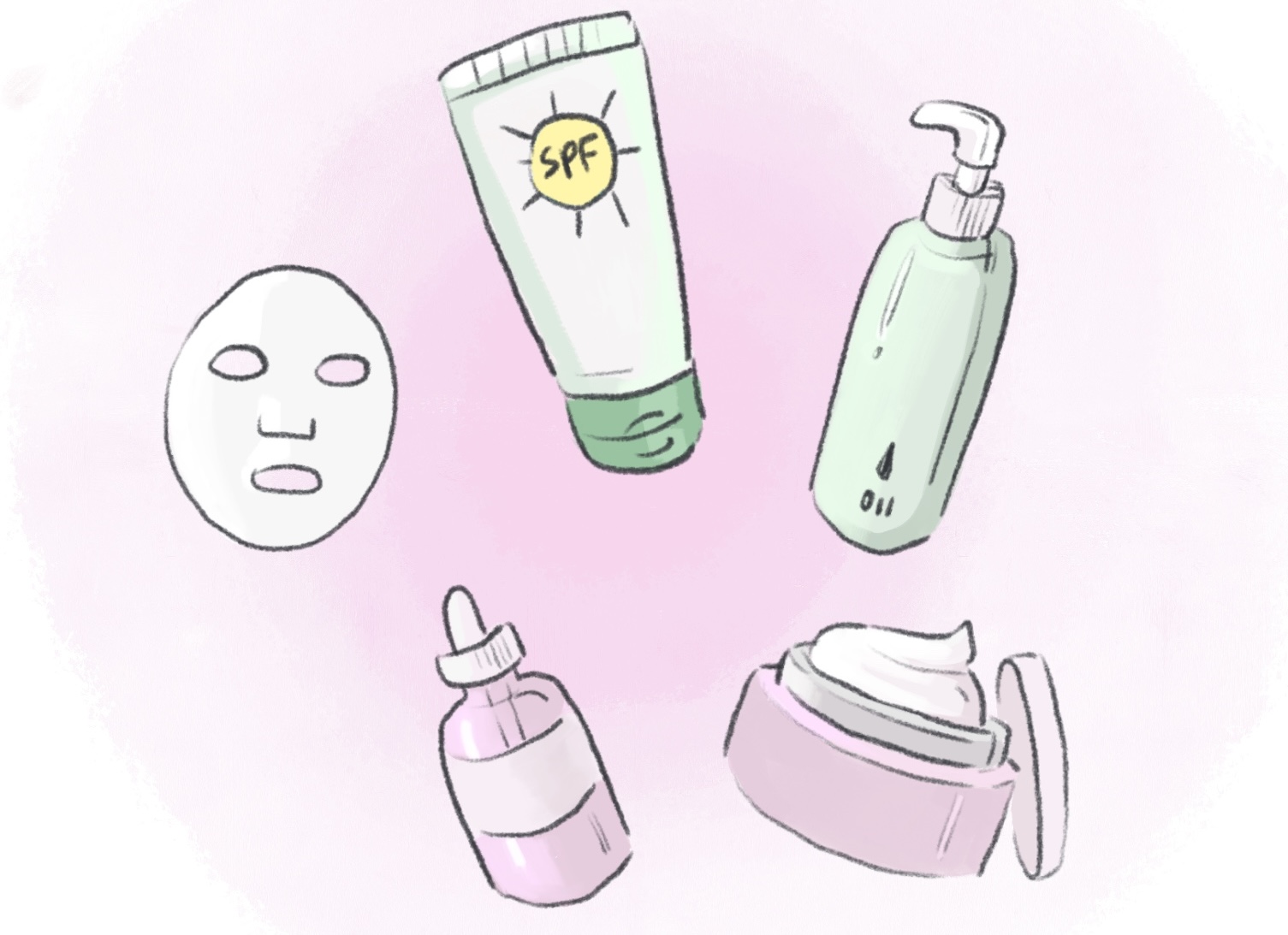Skincare gets serious: What do Yale students and dermatologists say?
Experts at Yale Medicine say that evidence-based habits — cleansing, moisturizing and sun protection — matter more than following viral trends.

Claris Shin, Contributing Illustrator
For many students at Yale, skincare is no longer just soap, lotion and sunscreen. Simple cleansers have given way to lengthy regimens of serums, moisturizers and acids as social media popularizes routines that promise glow and confidence.
Across the United States, dermatologists say that young people are adopting increasingly layered skincare routines, incorporating products like retinol, exfoliating acids and natural alternatives such as beef tallow. While some say that the routine craze can be helpful when it builds good habits, it can be risky when students stack too many products or chase trends without medical guidance.
Dermatologists at Yale agree to a baseline: keep it simple, stay consistent — and most importantly — wear sunscreen.
“It’s great that people care about skin, but everyone online seems to be an expert,” said Sara Perkins, a dermatologist at Yale Medicine. “As dermatologists, our role is to help people understand what has evidence and what does not, and overall help navigate the over-the-counter skincare space.”
Perkins notes that the two common issues in her clinic are confusion and overuse. Students with large collections of skincare products are often unsure which ones do anything at all.
“Consistency is key,” she said. “You must give a regimen four to six weeks before judging it.”
She recommends a gentle cleanser twice a day, moisturizer and daily sunscreen. Retinoids and acne washes can help, but only when there is a clear need.
Mary Laird, another dermatologist at Yale Medicine, agreed that complicated routines are not always necessary.
“If a regimen like this is working for someone, then great!” she wrote to the News. “But they are typically unnecessary, can be expensive and can cause irritation, so a simpler routine often works just as well.”
Perkins also said that the products themselves are oftentimes not the trouble — but rather how people combine them without knowing how they work can cause problems. “Skin is delicate. More is not always better,” she emphasized.
Sa Rang Kim MED ’19, a dermatologist at Yale Medicine specializing in skin-cancer prevention, noted she has seen trends appear in her clinic as well.
“It’s nice that social media has made skincare part of daily conversation, but misinformation can be harmful,” she said. Kim mentioned that she has seen many students use unnecessary 10- to 12-step routines.
Students’ habits vary. Some keep it minimal.
“I just wash my face daily,” Elena Miinea ’29 said. After an adverse allergic reaction to benzoyl peroxide, she avoided new products and continues to be wary of influencer promotions. “Some influencers might be getting real results, but others might be getting paid to provide certain opinions, so it’s not the most transparent process.”
Mridula Bharathi ’29 uses face wash, an exfoliating toner, Vaseline and a gel moisturizer at night. “I consider my skincare a source of happiness for me. My routine can take as long as I want, so I do it every night,” she told the News.
She also said that she was able to find the products that were most suitable with her skin through trial and error, and that her routine is always subject to improvement if she finds better products.
Bharathi believes that many children are influenced by social media influencers to buy skin products, such as anti-aging serum, that they do not really need.
Perkins and Laird mentioned two red flags to watch out for: pain or persistent redness.
“Your routine should never cause pain, redness, irritation, itch or rash,” Laird wrote. “If any regimen is not working for you after a couple of months, it might be time to see a dermatologist.”
Kim emphasized a similar caution against homemade remedies. She said that ingredients such as baking soda and lemon juice are commonly used in DIY face masks, which can cause skin irritation. Instead, using products that list their active ingredients is safest and most effective.
Sunscreen was the largest gap between dermatologist advice and student behavior. Perkins called daily sunscreen the most important habit.
Perkins urged students to make sunscreen use automatic, because small exposures such as the sun coming through the windows and short walks can add up.
“Sunscreen is the least flashy but most important step,” said Perkins. “Apply sunscreen every day, all year. Build the habit so you don’t forget.”
Campus and seasonal factors can also play a role in skincare. Perkins pointed to wind, cold weather and snow glare as sneaky sources of damage, while Laird said winter dryness can worsen eczema and may require thicker moisturizers.
Kim added that New England weather extremes make skincare unpredictable: dorm heaters in the winter can cause skin dryness, while summer sweat can also lead to irritation.
According to Fortune Business Insights, the skincare industry is projected to reach a value of $30.42 billion by 2032.







